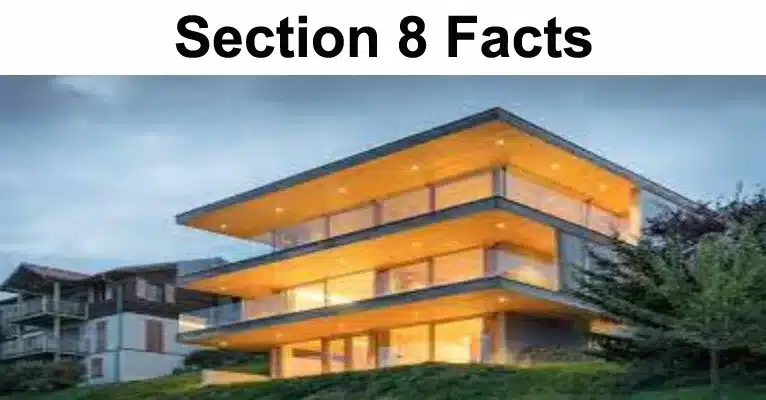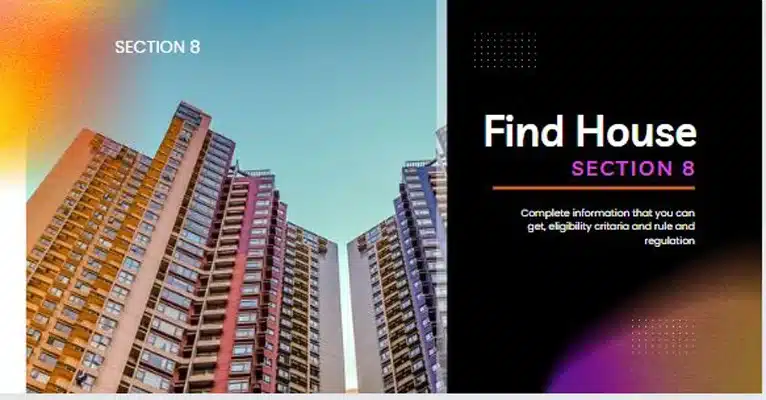5 Section 8 Housing Facts You Need To Know
Section 8 Housing, aka The Housing Choice Voucher Program, is a federal program that aims at making housing affordable for low-income families. Participants can go for the rental that meets the requirements of the program and can apply for the assistance voucher to afford the chosen rental.
If you are intrigued about Section 8 Housing and want to know more, continue reading as we explore a few of the facts to help you understand what it is.
Housing Facts
You can go for a Rental at any location:
One of the best things about the program is its freedom to go for any rental of your choice so you can make an informed decision based on your income, lifestyle, amenities, educational and job opportunities, etc. All you need to do is reach out to your local PHA to learn about the application process and the housing requirements, and you are good to go. Find a place that accepts assistance program vouchers, do the paperwork, get done with the inspection, and build a life in a location of your choice.
You can move while losing assistance from the Housing voucher program:

The program is an opportunity to assist people towards a better future; hence, you won’t be bound to a single place to keep getting assistance. You can move without losing your voucher; however, there are a few conditions applied, i.e., it is important to notify the PHA ahead of time, terminate the existing lease, and lastly, find a suitable home that fits the requirements.
As a tenant, you are bound to fulfill the program requirements:
The tenant must comply with the rules set forth by the HUD, i.e., paying its share of rent within due time, maintaining the rental in good condition, and notifying the Public Housing Authority if any changes occur in the composition of the family or the income it earns.
The landlord must adhere to the program’s standards in terms of housing:
The Section 8 Housing Assistance Program aims to provide a safe and clean house for tenants at an affordable range. Hence, the landlords must adhere to the quality standards enshrined in the federal program to receive housing assistance payments from the government. In addition, the landlord must offer all the facilities and services agreed upon in the signed lease and the contract with the PHA.
The Department of Housing and Urban Development (HUD) covers the program’s cost:
Since Section 8 Housing is a federal program designed by HUD, the funds are allocated by the Department of Housing and Urban Development itself, which are then further distributed by the PHAs to make payments for the rental on behalf of the qualified families. HUD even pays the cost of administrating the program. Here’s how the funds work: HUD invites the Public Housing Authorities on the availability of funds and asks them to submit applications for additional housing vouchers to access funds.
Landlords pre-screen and select Housing Choice Voucher tenants as they screen and select other tenants:
There is a whole selection process followed by SDHC to choose tenants, i.e., verifying their credit history, running background checks, and playing by the rules, aka Fair Housing Laws. The tenant selection process allows landlords to go for tenants who comply with the regulations. The Reviews done by the Program Integrity Unit allow the authorities to take systematic action against tenants in case of compliance.
Landlords have the upper hand in deciding how many units they rent to Housing Choice Voucher tenants:
It is the landlord’s choice to accept the voucher or not. Similarly, Landlords must only rent some available units to the Housing Assistance Program participants. Moreover, if a program participant chooses to move out, the landlord can rent the vacant unit to another tenant, whether a voucher owner or not.
The landlord is required to complete most of the paperwork:
It is the landlord’s responsibility to complete the paperwork that begins with a new lease. The landlord can seek help from SDHC’s staff. The required paperwork includes requesting a Tenancy Approval form, W-9 form, Lease Agreement, Lead Warning Statement, and non-complete documents such as inspection reports and rent letters.
Landlords can go for reasonable rent increases:
The landlords are allowed to increase rent after the initial lease term, with a condition, i.e., they must send a written notice to the tenant and SDHC. However, increasing the rent does not mean asking for unreasonable costs; as per Section 8 of the Housing Choice Program, the landlord cannot pay the same rent as unassisted rental units.
SDHC does not stop rental assistance payments to landlords without reason or notice:
The landlord can contact SDHC in case of delayed rental assistance payment to determine payment timing. If a tenant violates the lease agreement, as per law, the SDHC will only quit paying the assistance rent once the tenant moves out or is locked out by the landlord.
Bottom Line
Section 8 Housing enables low-income families to afford a roof over their heads in this soaring cost of living crisis. You can apply for the assistance program if you are eligible as per the criteria set by HUD, i.e., have a family, low-income, elderly, homeless, abused, etc. The purpose of of the program is to provide a clean, safe, and affordable home to deserving people. One of the biggest catches about Section 8 is that you won’t be bound to a single location, i.e., a publically owned unit, as you can choose to rent any property that could be rented on a program voucher, and prioritizes your family needs like job opportunities, educational facilities, etc. while having a clean and safe home for them.
You should apply for all the housing programs you are eligible for to save time on the waitlist. You can stay in Section 8 Housing if you meet all the eligibility requirements, i.e., income, family size, tenant responsibilities, etc.
You should apply for all the housing programs you are eligible for to save time on the waitlist. You can stay in the Program if you meet all the eligibility requirements, i.e., income, family size, tenant responsibilities, etc.
FAQs
What is the Section 8 housing program?
This is a federal program funded and managed by HUD across all states of the U.S. and offers subsidized rental housing to low-income people, i.e., families, elderly, disabled people, etc.
How can I qualify?
The eligibility criteria vary from one state to another, with a minimum age of 18 and an income range. The local Public Housing Authorities usually require an eviction-free rental history and positive landlord referrals. However, individuals with critical needs are prioritized over other applicants, i.e., the homeless, the elderly, the deficient income families, involuntarily displaced, victims of domestic abuse, etc.
How much of my rent will be paid by housing voucher?
The housing coupon covers most of the tenant’s monthly rental payments. However, there is no fixed amount, as it depends upon the Fair Market Rent, the unit’s size, and PHA’s payment standards. Usually, the voucher covers a significant amount of the rent, with tenants spending at least 30 % of their income paying rent.
How long does it take to approve an application?
The applicants are usually placed on a waiting list, which depends on the area you are applying in and the list of prioritized individuals, i.e. if the vouchers are in high demand in your area or state. You may have to wait longer than expected. The general rule is that PHA stops accepting new applications if the waiting time exceeds a year. However, you can apply from multiple PHAs to expedite your approval chances.
How long does one stay in Section 8 housing?
The program does not come with a time limit, as the only rule is to comply with your local PHA’s rules and keep up with the eligibility criteria. You will be good to continue receiving the subsidies. You must report any change in the size of your family or income, as failing to say that could jeopardize your further program participation.
Does HUD offer emergency housing?
Yes, HUD has a system that prioritizes people who ask for emergency assistance. In addition, the Emergency Housing Vouchers are distributed via ARPA (American Rescue Plan Act) to people in utmost need, i.e., the victims of domestic violence, people fleeing unsafe living conditions, the homeless, the victims of sexual assault or human trafficking, etc. However, the Local PHAs usually have limited EHVs available.



![Housing Choice Voucher Waiting List Opening [UPDATED]](https://smartopt.info/wp-content/uploads/2023/11/Housing-Choice-Voucher-Waiting-List.webp)



